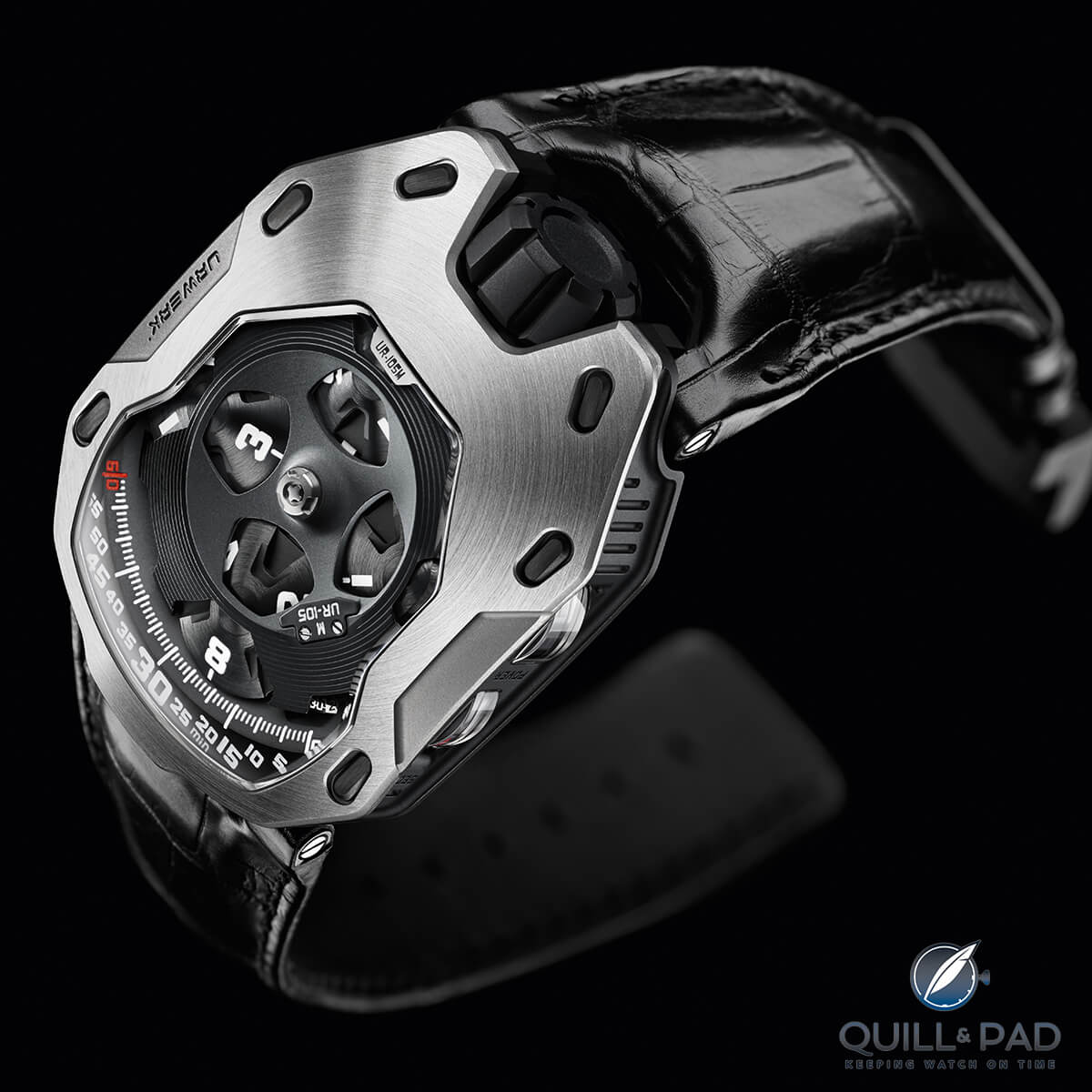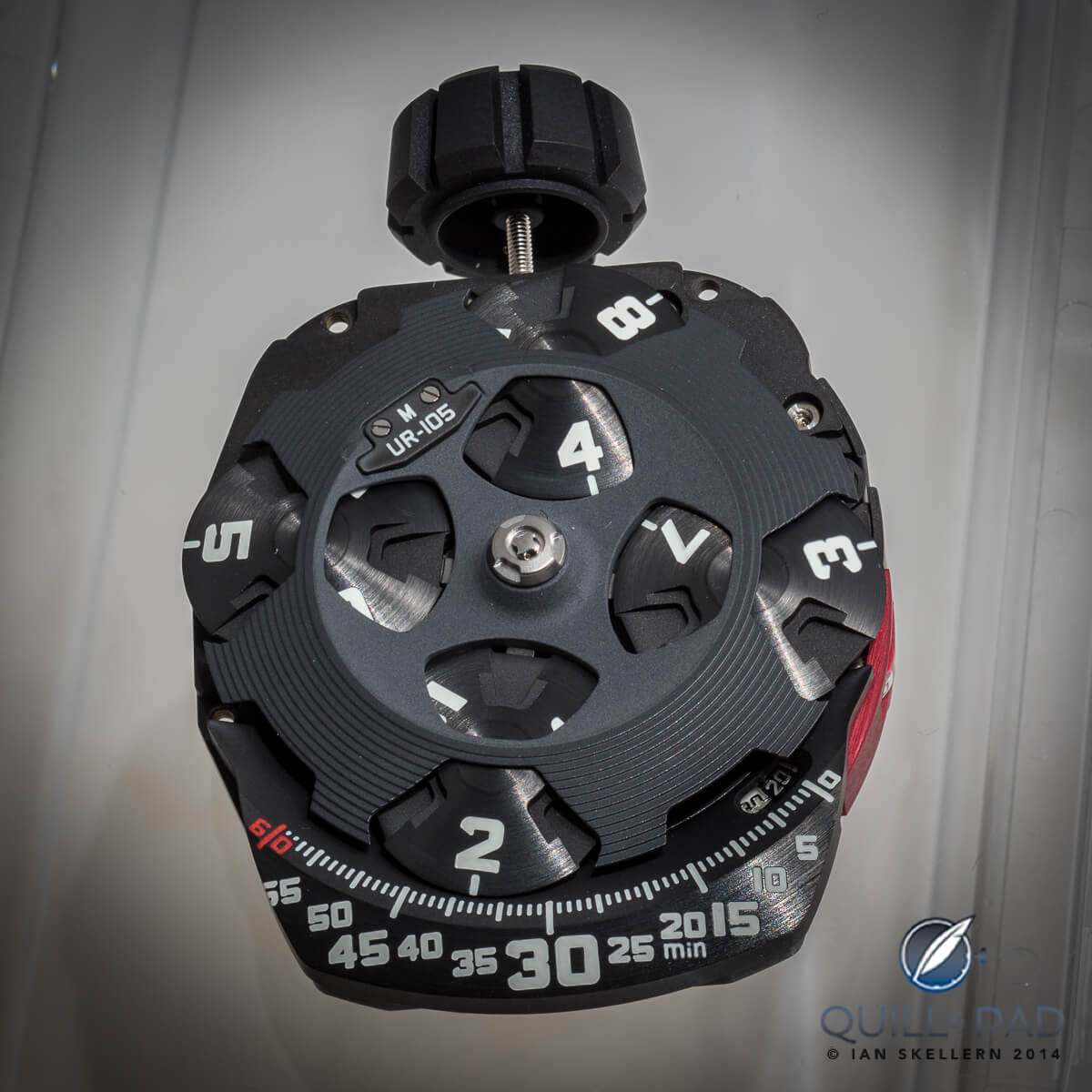by Ian Skellern
I know that everyone says this as they get older: but, honestly, isn’t the world really moving much faster today than a generation ago, even ten years ago?
We are now permanently switched on. The lines between work and relaxation (relaxation, remember that?) blur, and consumer products go either out of fashion or are outdated in planned obsolescence in ever-quicker cycles.
Over the last decade or so, what was once the slow but stately business of haute horlogerie has been accelerating like it’s got a Saturn 9 rocket up its collective countersunk-jewel-hole.
And as much as I love them, I blame the new generation of contemporary watchmakers and creators like Urwerk, MB&F, Vianney Halter and HYT for this frenetic pace.
If it ain’t broke, don’t try and fix it
Established brands with centuries of tradition tend to basically recreate the past in the, “if-it-ain’t-broke-don’t-fix-or-change-it-(much)” approach to watchmaking.
Last year, Geneva’s Grand Prix d’Horlogerie even had a category called “Historical Revival,” which offered brands a prize for the best contemporary reinterpretation or reissue of an iconic old model. As if they need any encouragement!
But in not feeling constrained by tradition, a few of the younger brands have presented us with a steady supply of exciting new models with totally new complications unlike anything ever seen before in the entire history of watchmaking.
And we (and I include myself here) get a horological high with each sensational new release and fervently look forward to the next one like a junkie in anticipation of the next fix.
Horological dopamine
Happily for those of us hooked on this horological dopamine, it is not just the youthful brands that regularly deliver our fix; many established brands have also been showing that they can create provocative case design and unusual complications as well as the upstarts.
So the wild watches get ever wilder and ever more numerous. And like any addict, we need more and more just to reach the same high.
As innovative and exhilerating as this all is, one of the first avant-garde brands that started us all on this exhilarating ride isn’t really playing the same game at all: Urwerk.
They are watches Jim, but not as we know it
Urwerk is one of the torch-bearers of the new wave of contemporary watchmaking and is simultaneouslz one of the most admired and influential of the new brands. Just 14 years old, it’s still not surprising that as this brand’s list of ground-breaking models is simply astounding: the taga-topped UR-103.03, which really brought notice; the Opus 5 for Harry Winston with its satellite hours; the UR-1001 pocket watch with an indicator running to 1,000 years; the UR-CC1 with linear displays; the UR-202 with telescopic minute hands inside orbital satellites; the UR-210 with the winding efficiency indicator; and the EMC with integrated electronics.
The UR-105M
The UR-105M now joins this new-generation family. But before we look at what’s new − and that’s practically everything − let’s quickly note what isn’t, such as the case, which shares the same design cues as the UR-210 and UR-1001, and the conical hour satellites, which we first saw on the UR-103.
In an era when new models appear to be designed as much, if not more, for shock-and-awe as they are for time-keeping, the UR-105M paradoxically looks both cutting-edge-modern and reassuringly familiar.
And that’s because as new wave as Urwerk is, it is not really into the shock-jock approach to watchmaking. Yes, both the brand’s complications and case designs are 100 percent original and anything but traditional; however, Urwerk co-founders Felix Baumgartner (chief watchmaker) and Martin Frei (chief designer) have, over the last decade or so, developed a case style they (and many others) feel comfortable with and don’t appear to be in any hurry to make changes for the sake of making changes.
The Porsche 911, Rolex Submariner, Audemars Piguet Royal Oak and Urwerk 105M
When you have an iconic and instantly recognizable design like the Porsche 911, Rolex Submariner, or Audemars Piguet Royal Oak, new models evolve from the old rather than replace them. Urwerk appears to be going down this path of constant evolution rather than blowing our minds with revolutions of ever more sensationalistic designs.
And that shows a lot of maturity and confidence for such a young brand.
The more things change, the more they stay the same
But don’t think that the UR-105M is simply a UR-103 movement in a UR-210 case, because this is a completely new watch from the ground up that just happens to share the same orbital satellite time display.
In Felix Baumgartner’s own words, “The UR-105M is both a completely new watch with a new case and a new movement, and a continuation of the UR-103.”
Urwerk basically has two distinct time displays now (if we ignore the experimental UR-CC1): the rotating cubes of the UR-210/UR-202 and the orbital cone-shaped satellites of the UR-103/UR-105.
Satellites, satellites and more satellites
With the UR-105M, Urwerk has retained the system of four satellites, each with three hour numbers, telling the time as they arc leisurely past the curve of the minute scale.
The most obvious difference between the satellite complication of the UR-105M and UR-103 is the PEEK (PolyEtherEthercetone) cap over the carrousel supporting the hour satellites. This perforated cover hides the non-current hour satellites, while still offering a glimpse into their orbital flight paths, to focus attention on the actual time.
Like the model it replaces, the satellites on the UR-105M are three-dimensional cones that make reading the time easy from both above and from the side.
The six distinctive elongated bolt heads visible on the bezel are completely functional as they attach the bezel to the case.
A gift that keeps on giving
Like all Urwerks, the more you look at the UR-105M, the more you appreciate the meticulous attention to detail.
Two protruding curved windows break the line of the right side of the case band, respectively housing displays for the seconds (horizontal) and power reserve (vertical).
In an apparently playful touch, seconds can also been seen occasionally (they get intermittently covered by the hour satellites) beside the first five minutes of the minutes scale.
The UR-105M looks great from any angle, but my favorite view is from the side where it looks like a streamlined aquatic animal.
The back of the UR-105M features Urwerk’s now-traditional control board featuring useful functions and indications that are not needed on a daily basis. These include a second, more legible, 42-hour power reserve indicator; a five-year oil change indicator telling the owner when to send the watch for a service; a timing fine-adjustment screw so the owner can easily tweak the rate to match his or her own wearing habits; plus (and for the first time) a fine-tuning adjustment scale indicating exactly how many seconds faster or slower the rate adjustment screw has been turned.
Jousting knights
While the case and control board of the UR-105M is in titanium, the top bezel is in steel. Urwerk considers the steel bezel to be analogous to the protective armor of a medieval knight and has released the UR-105M in two versions: the Iron Knight with a bare steel bezel and the Dark Night with a black AlTiN-treated steel bezel.
While the UR-105M is manual winding via that massive, sensually tactile crown, I’m guessing that last letter means we might see an “A” version in future, though with Urwerk, anything is possible.
I’ve always loved the slim, sleek shape of the Urwerk UR-103s, but I’m now feeling fickle, and given the choice today it would be the UR-105M (if I couldn’t have both).
For more information, please visit www.urwerk.com/en/collection-103-collection-ur-105m
Quick facts:
Functions and indications: hours and minutes via orbital satellites, lateral seconds; power reserve indicator, control board on back with a second power reserve indicator, oil change (service) indicator, rate adjustment indicator and rate adjustment screw
Case: titanium with steel bezel (Iron Knight) or AlTiN-coated bezel (Dark Knight), 39.5 x 53 x 16.6 mm
Price: CHF 58,000 (without tax) for the Iron Knight and CHF 63,000 (without tax) for the Dark Knight
*This article was first published on April 23, 2014 at Back To The Future: The Urwerk UR-105M.
You might also enjoy:
Urwerk AMC: Atomic (Clock) Mechanical Control Is A 21st Century Version Of Abraham-Louis Breguet’s Sympathique Clocks But Much, Much Better (Geiger Counter Not Included)
Urwerk Vs. MB&F: How Do They Square Up?
Grab Your Hoverboard And Fire Up The DeLorean: The Urwerk UR-105 CT Streamliner Takes Us Back To The Future (Where It May All End)
Leave a Reply
Want to join the discussion?Feel free to contribute!






























































For 60 Grand, does it come signed by George Lucas? Irk-werk….. who knew a brand could make modern both ridiculously expensive and detestable?